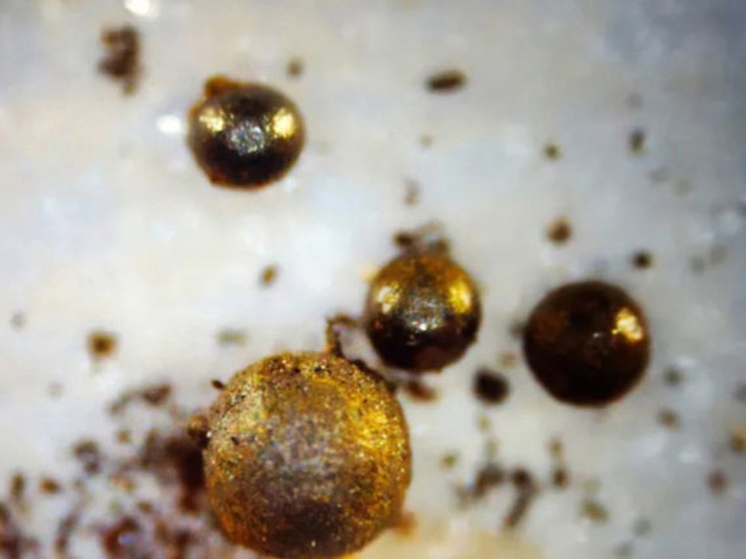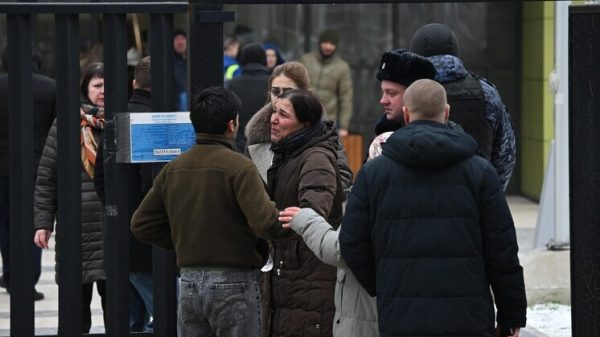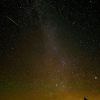Interstellar meteorite may be a hoax
Harvard astronomer Avi Loeb surveyed the seabed of the Pacific Ocean in 2023 in search of meteorite fragments. Then he stated that he had discovered metal balls that “may indicate extraterrestrial technological origin.” Critics are now suggesting that Avi Loeb was looking for meteorite debris in the wrong place.
 Photo: Galileo Project< /span>
Photo: Galileo Project< /span>
A new study casts doubt on a Harvard professor's claims that metal balls discovered in the ocean may have been made by aliens.
Recall that in 2023, the director of the Center for Computational Astrophysics at Harvard, Avi Loeb, said that the metal balls found in the Pacific Ocean were left by a meteorite that exploded near Earth in 2014. He noted that their strange chemical composition «may reflect extraterrestrial technological origins.»
His claims were criticized by parts of the scientific community, who believed that Loeb was making wild claims without sufficient evidence to back them up. Researchers now believe that Loeb's costly expedition to search for evidence of extraterrestrial technology on the seafloor was diverted from its intended target by seismic data.
A study led by Johns Hopkins University (JHU-led) found that the flare on the seismometer that Loeb used to locate the crash could simply have been caused by the vibration of a passing truck.
“It seems very likely that the place they were looking for on the seabed was chosen incorrectly. Therefore, everything that they recovered from the bottom of the sea, and thought that it was from this carrier, actually had nothing to do with it,” — JHU researcher Ben Fernando explained in an interview with Business Insider.
Recall that in 2019, Loeb and his team searched databases for unusual meteors that were moving quickly. That's when they stumbled upon a meteorite fireball that entered the Earth's atmosphere in 2014.
The meteorite, named IM1 by Loeb's team, was first spotted by US Department of Defense sensors. The team of researchers reported that it entered the atmosphere at a speed of 27 miles per second, indicating its arrival from outside the solar system.
The Department of Defense proposed a meteorite impact location that Loeb and his team used as a base lines to define a 46 square mile zone.
Near Papua New Guinea, the expedition searched for metal balls often left behind by meteorites that break up in the atmosphere. Loeb's team recovered 805 beads. The tenth of them, according to the analysis, contained unusual levels of three metal elements — beryllium, lanthanum, uranium — and atypical isotopes. This, they say, may indicate an interstellar origin.
One hypothesis is that the meteorite originated from the crust of a planet outside the solar system. In his article, Loeb went even further, saying that perhaps the meteorite's bizarre composition meant it could have been manufactured using extraterrestrial technology. Skeptics decided that this could be explained by the noise of a nearby city, and not by shock waves caused by a meteorite falling nearby.
«This is probably the signal of a truck driving past the seismometer,&rdash; Fernando stated. He added that DoD measurements are notoriously inaccurate when it comes to pinpointing the speed and location of near-Earth objects.
The JHU-led team tracked data from acoustic measuring instruments installed in the area. These car-sized microphones are typically used to detect illegal nuclear testing and are finely tuned to detect explosions in the atmosphere.
Other scientists have suggested that contamination from coal ash runoff from nearby industrial processes may be behind the beads' peculiar composition.
Loeb disagrees with JHU's analysis, saying the seismic data was only used to corroborate data from other sources.
“What comes to Earth from outside the solar system should be studied by scientists who are serious about paying attention to new data, and not ridiculed by malicious debunkers,” — he admitted in a Medium post.
Recall that the professor’s hypotheses caused outrage in the scientific community, many of whom believe that scientists should put forward theories only if they have a solid evidence base.
As for the truck hypothesis, Loeb disagrees with this analysis: “We found that data from other seismometers further away did not provide meaningful constraints, while the new position used large uncertainties from other seismometers. This could argue that the fireball could have been anywhere in the larger region if we had ignored Department of Defense localization data,” — commented the scientist.
Despite this, Avi Loeb’s team is planning another expedition to detect fragments of interstellar meteorites.






















































Свежие комментарии